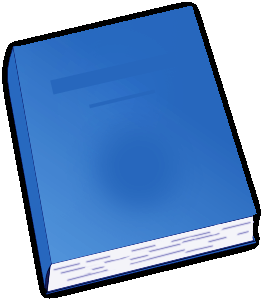|
Books Should Be Free Loyal Books Free Public Domain Audiobooks & eBook Downloads |
|
|
Books Should Be Free Loyal Books Free Public Domain Audiobooks & eBook Downloads |
|
Children and Their Books By: James Hosmer Penniman (1860-1931) |
|---|

In "Children and Their Books" by James Hosmer Penniman, readers are taken on a fascinating exploration of the world of children's literature and its impact on young minds. Penniman delves into the power and significance of literature in shaping a child's perception of the world, offering insights that are both thought-provoking and illuminating.
One of the most commendable aspects of this book is Penniman's extensive knowledge of the subject matter. Drawing on years of experience as a professor of Child Study at Harvard University, the author demonstrates a deep understanding of children's literature and its psychological, social, and educational implications. This expertise is evident in his analysis of various literary genres, from fairy tales to adventure stories, and how they cater to different age groups and developmental stages.
Moreover, Penniman's writing style is engaging and accessible, making complex theories and concepts easy to grasp. His ability to convey information in a concise and engaging manner adds to the overall readability of the book, making it suitable for both researchers in the field of Child Study and general readers interested in children's literature.
One of the book's standout features is the author's emphasis on the importance of diversity in children's books. Penniman emphasizes the need for narratives that reflect various cultures, ethnicities, and experiences, arguing that these books contribute to empathy, understanding, and the development of a well-rounded perspective in children. By highlighting the impact of representation in literature, Penniman raises important questions about the role of books in shaping children's identities and sense of belonging.
The book's structure is well-organized, with each chapter focusing on a different aspect of children's literature. Penniman explores everything from the historical evolution of children's books to their thematic and moral implications. By addressing a wide range of topics and providing ample examples from classic and contemporary literature, the author ensures that readers come away with a comprehensive understanding of the subject.
While "Children and Their Books" is an informative and well-researched book, it is important to note that it was first published in 1920. Although many of the concepts and theories discussed are still relevant today, readers should approach this book with a historical perspective and consider the advancements in the field of children's literature that have occurred since its publication.
In conclusion, "Children and Their Books" is a thoroughly enjoyable and intellectually stimulating read. Penniman's expertise shines through in his exploration of children's literature, and his passion for the subject is evident on every page. This book serves as a valuable resource for educators, parents, and anyone interested in the significance of children's books in shaping young minds. BY JAMES HOSMER PENNIMAN, LITT. D. [Illustration: School Bulletin Publications emblem] SYRACUSE, N. Y. C. W. BARDEEN, PUBLISHER Copyright, 1921, by C. W. BARDEEN CHILDREN AND THEIR BOOKS The most vital educational problem will always be how to make the best use of the child's earlier years, not only for the reason that in them many receive their entire school training, but also because, while the power of the child to learn increases with age, his susceptibility to formative influences diminishes, and so rapid is the working of this law that President Eliot thinks that "the temperament, physical constitution, mental aptitudes, and moral quality of a boy are all well determined by the time he is 18 years old." Great waste of the child's time and mental energy in the precious early years is caused by disregard of the way in which his mind unfolds. Not only are children set at work for which they are not yet fitted, but frequently they are kept at occupations which are far below what they might profitably engage in. The child should be guided, not driven; to force his mind is an educational crime. Long continued attention and concentration are injurious, but by using tact a great deal may be accomplished without strain... Continue reading book >>
|
| This book is in genre |
|---|
| Kids |
| eBook links |
|---|
| Wikipedia – James Hosmer Penniman |
| Wikipedia – Children and Their Books |
| eBook Downloads | |
|---|---|
|
ePUB eBook • iBooks for iPhone and iPad • Nook • Sony Reader |
Kindle eBook • Mobi file format for Kindle |
|
Read eBook • Load eBook in browser |
Text File eBook • Computers • Windows • Mac |
| Review this book |
|---|